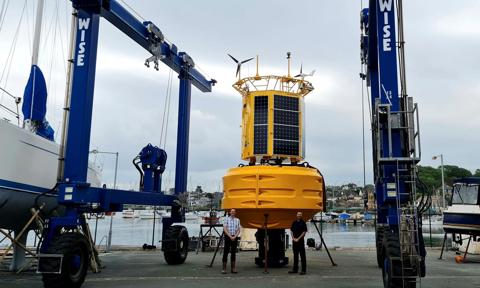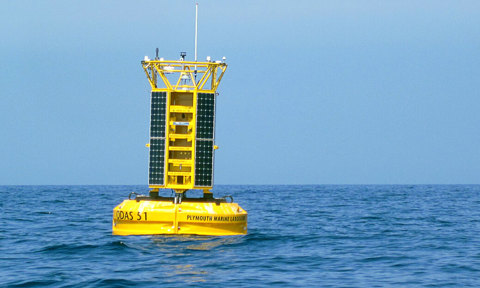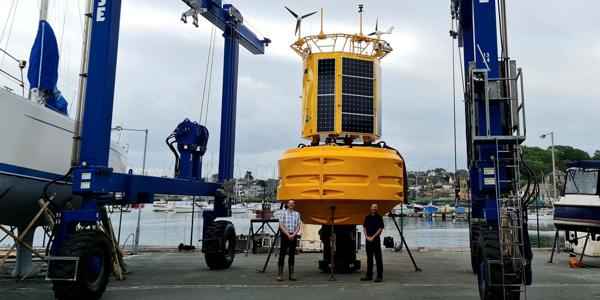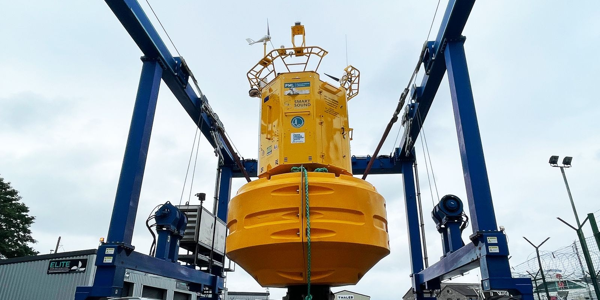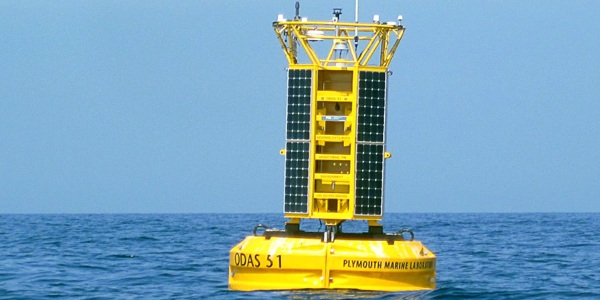A new Autonomous Data Buoy, developed by the Plymouth Marine Laboratory as part of the Smart Sound Plymouth project, has been launched from Turnchapel Wharf ahead of its deployment in the English channel.
Article below first published on Sky News on 30/6/21, by News correspondent Dan Whitehead. See original article
'One of a kind' research buoy launched off Plymouth coast
It is the most advanced autonomous buoy ever developed in the UK and will measure key indicators for climate research.
The most advanced autonomous buoy ever developed in the UK has been launched off the coast of Devon to monitor the health of our oceans.
Plymouth Marine Laboratory has spent two years building the near nine-metre tall buoy, which is packed with sensors and monitoring equipment.
It cost more than half a million pounds, weighs around three tonnes and is powered solely by wind and solar.
The buoy, which will be based five miles from the Plymouth coast in the Western Channel Observatory, will monitor key indicators for climate research.
"It's one of a kind" said Oban Jones, a marine science technologist for the Plymouth Marine Laboratory. "There's nowhere else in the world at the moment that's going to be doing what we're doing,"
He told Sky News the data will be made widely available around the world. "It's a test and a trial, but it will also give us results that are published on our website and go on to help make policy in the UK and internationally."
James Fishwick is head of operations and technology for the Western Channel Observatory.
He said: "We're monitoring the standard things like temperature and salinity - but then importantly we're looking at oxygen levels, nutrient levels in the water, the amount of plant life which is the base of the food chain and we're also looking at the clarity of the water, PH levels, ocean acidification - all really key parameters for climate research."
Sensors will be lowered to a depth of 50 metres - with the ability to measure and profile changes in the ocean every few centimetres.
The buoy is part of a fleet of autonomous, net-zero ocean robots developed by the laboratory, including submarines and a surface vessel which will all communicate to each other and send back vital data.
Dr Fishwick said it is an incredibly exciting time for the Laboratory: "The combination of the new data buoy and the autonomous vehicles will give us unrivalled capabilities for this type of ocean observation."
The team of scientists will spend the next two weeks calibrating sensors in the harbour, before towing the buoy out to its new home in the Channel, with the first data expected to be transmitted back by mid-July.


